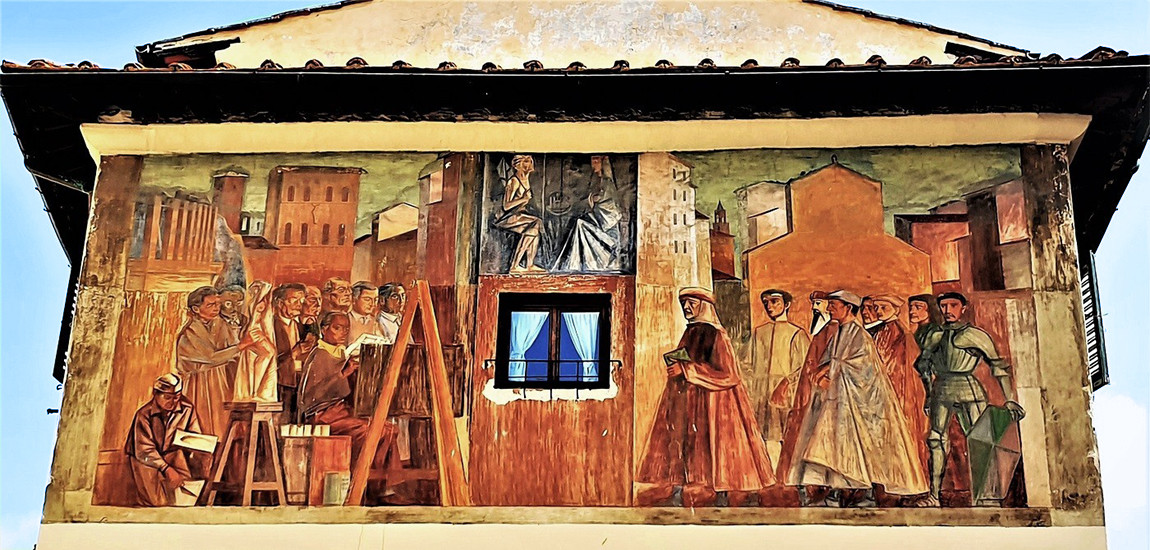
Murals from another era: a fresco in Piazza della Calza
We are in Porta Romana, south of Florence, where the fourteenth-century walls are still standing, surviving the urban restructuring by Giuseppe Poggi in 1865. After the monumental door, a small square opens up, called Piazza della Calza. The name derives from the church and the convent that overlook the square. The Convent, now used as a conference venue, preserves among the many works of art also a Last Supper from 1514 by Francesco di Cristofano known as Franciabigio, also author of the fresco at the top of the back door of the walls.
The name of San Giovanni
Battista della Calza complex derives in turn from the monastic order of the
Ingesuati, famous for the production of stained glass windows, which since 1529
had its seat in the convent of the square. They were called Fratelli della Calza (literally Brothers
of the Sock), because they wore a gray cloak with a long hood that looked like
a sock (calza).
A large fresco on the facade of a
building in front of the door catches the eye of anyone entering the ancient
walls. The work replaced one from 1616, commissioned by the Grand Duke
Cosimo II Medici to the painter Giovanni Mannozzi (1592 - 1636), of which only
a preparatory drawing remains. The subject of the original work was an allegory
of Florence, lady of the Grand Duchy of Tuscany, with the two defeated cities
of Siena and Pisa on either side. A self-celebration of the Medici power, a
warning for those entering the city.
The fresco, exposed to the elements, had deteriorated over the centuries and was finally severely damaged during the battle of Florence in the summer of 1943.
In 1953, the mayor of Florence announced a competition to paint a new fresco. The work was commissioned to Mario Romoli (1908-1978) and inaugurated in 1955.
Entitled Life in Florence over the centuries, it is divided into two parts, representing two groups of figures.
On the right we find important characters from the past: Dante Alighieri, Masaccio, Leonardo da Vinci (with a white beard), Marsilio Ficino, Girolamo Savonarola (with the Dominican dress), Angelo Poliziano, Lorenzo the Magnificent and Francesco Ferrucci (in armor).
On the left, contemporary artists and writers of the time: Quinto Martini, Luigi Campedelli, Giovanni Papini, Ardengo Soffici, Ottone Rosai, Italo Gamberini, Primo Conti and the same author of the fresco Mario Romoli. Lastly, a bricklayer, a symbol of all the workers who helped rebuild Florence after the destruction of the war.
Above the small window that acts as a watershed between ancient and contemporary, the Madonna and St. John the Baptist, protector of the city, or perhaps the archangel Gabriel. Among them the inscription IHS, an ancient abbreviation of Christ.
The rigid and geometric style, the marked outlines and the stylization of the characters make the artwork understandable for everyone and the figures easily recognizable even from a distance.
A contemporary fresco surrounded by medieval walls, a truly unique work in its kind in Florence.



